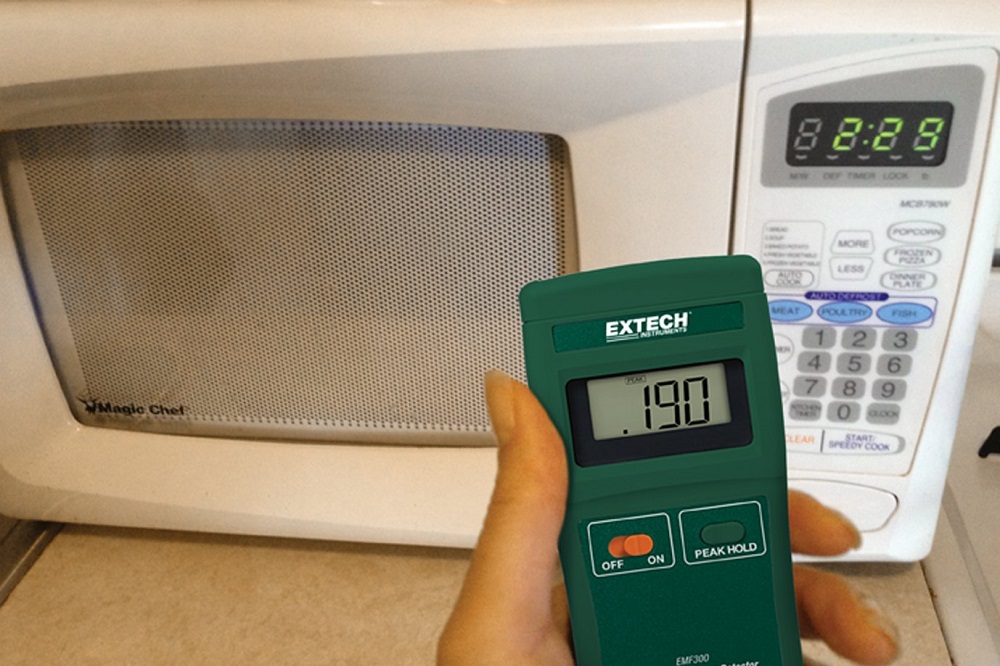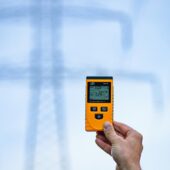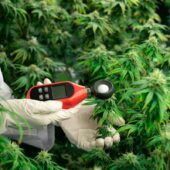The biggest concern many people have over using microwave ovens is radiation leakage. In reality however, the most common injuries related to microwave ovens are burns from foods and drinks, usually as users pick them from the oven.
Exposure to high levels of microwave radiation can have serious health consequences especially to the eyes and, for males, testes.
But modern home microwave ovens are designed with multiple safety measures to protect you from radiation exposure. This includes at least two locks that stop the microwave if the door is opened, and a monitoring system that keeps the microwave from function if either of these locks malfunction.
While some microwave radiation may find its way out of the oven, it’s very little and unlikely to cause any harm.
While the UK does not have requirements on microwave radiation leakage, most appliance manufacturers follow the US requirement that microwave leakage not exceed 5mW/cm2 at a distance of two inches (5cm) from the oven.
This number is much lower than the known dangerous level of microwave radiation exposure. Also, the amount of radiation quickly falls the further you are from the microwave oven. Even being just 20 inches away reduces the level of radiation by a hundred times.
Something else to keep in mind is that, even if some of the microwave radiation reaches you, it’ll do no harm. Microwave radiation is non-ionising, meaning it does not do any damage to your cells or DNA.
The main risk is tissue heating and burning (the same way microwaves heat food), but you would need to be exposed to a very high level of radiation for this to happen.
In normal circumstances, your microwave oven is probably the appliance in your home that’s least likely to harm you.
It’s also harmless for people with pacemakers and other implanted medical devices. Modern pacemakers are shielded from electrical and magnetic interference.
Is Microwave Leakage Dangerous?
That said, there are certain circumstances that can put you in danger of exposure to harmful microwave radiation.
For example, if your microwave is faulty and keeps operating even when you open the door or the door is not completely shut, it could expose you to high levels of microwave radiation.
Another possible scenario is if the microwave door is bent or warped or some other part of the oven is damaged such that it lets radiation out of the oven.
If you have an older microwave, perhaps one passed down from your parents or grandparents, it may also leak some radiation because safety regulations were more lax when it was made.
If you are at all concerned about radiation leakage from your microwave oven, it’s a good idea to check exactly how much, if any, radiation the microwave oven is giving off.
How To Check And Measure Microwave Radiation Leakage
There are some quick ways you can check if your oven is emitting radiation leakage. These don’t require buying anything, but they won’t tell you exactly how much radiation the oven is giving off.
- The easiest test is to put a phone in the microwave (don’t turn the oven on), and call it with another phone. If the call goes through, it indicates some microwave leakage.
- Turn on hotspot on a phone and put it in the microwave. Then, see if you can find and connect to the WiFi network on another phone or device.
- Put a glass of water or a bowl of food in the microwave oven. Turn it on and set the timer. Before the timer elapses, press the button to open the microwave door. The microwave should immediately stop working. If it doesn’t, it’s faulty and you should stop using it.
Keep in mind that the smartphone test does not tell you exactly how much radiation is leaking. Even if the phone rings or you can connect to the hotspot, indicating a leakage, radiation from the oven may not be high enough to be a concern.
A more accurate test requires a microwave leakage meter or detector.
How To Use A Microwave Leakage Meter

A basic microwave leakage meter can measure the amount of radiation leakage from an oven and display it in milliwatts per square centimeter (mW/cm2).
Cheap microwave leakage detectors won’t tell you the exact figure; they just use warning lights to indicate safe or dangerous levels of radiation. They’ll emit light and audio warnings if the radiation level is above 5 or 10 mW/cm2.
Professional microwave leakage meters can measure microwave radiation from other sources other than microwave ovens. These include cell towers, internet routers and radar devices.
To use a microwave leakage meter, place a glass of water in the microwave and set a 1-minute timer. Holding the detector at the distance recommended by the user manual. Move the detector around the microwave oven, focusing on potential leakage areas such as around the door, mear air vents and around seals.
If the detector has a display, check the readout. Some detectors have a setting where it’ll record and display the highest reading, so you can easily check the maximum radiation the microwave emits.
If the detector uses warning lights, watch the light that indicates radiation level above 5mW/cm2.
If you get a reading above 5mW/cm2, stop using the microwave oven and have it serviced. It could be a problem with a seal, lock or some other part of the oven.
Re-test the microwave after servicing to make sure it is safe to operate.



Have you determined which brand has the lowest rf leakage?